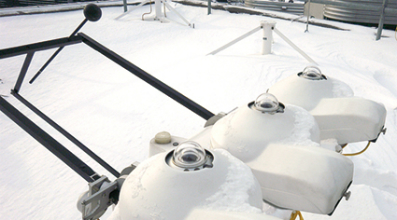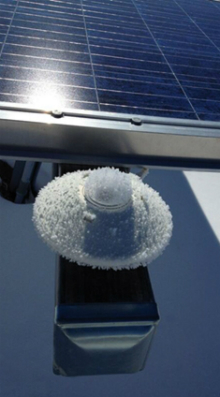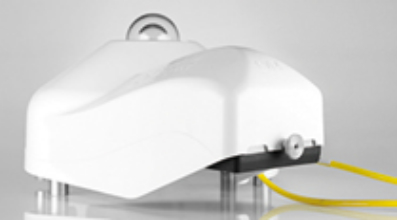The BSRN (Baseline Surface Radiation Network) of the World Climate Research Programme (WCRP) is the highest quality network of stations for measuring the components of solar, sky and surface radiation. It states in its Operations Manual ‘The recommended procedures for the measurement of global radiation require the use of a ventilated housing’.
International Standard ISO/TR 9901:1990 ‘Solar energy - Field pyranometers - Recommended practice for use’ is a Technical Report of Technical Committee ISO/TC 180, Solar Energy. The scope is the measurement and recording of climatic data in relation to solar energy utilization. The Report advises the use of ventilation where high accuracy and reliability of data is required.
 The Report requires that radiometers used for measurement in the plane of a solar collector must be installed parallel to the aperture area of the collector with a maximum deviation of 1 ° (preferably 0.5 °). To ensure that the radiometer receives the same irradiance as the collector under test, the radiometer position must be chosen very carefully to avoid reflections and partial shading which do not reach the collector at the same time.
The Report requires that radiometers used for measurement in the plane of a solar collector must be installed parallel to the aperture area of the collector with a maximum deviation of 1 ° (preferably 0.5 °). To ensure that the radiometer receives the same irradiance as the collector under test, the radiometer position must be chosen very carefully to avoid reflections and partial shading which do not reach the collector at the same time.
The radiometer housing must be shielded from irradiance and be thermally decoupled from the mounting surface as well as is possible, to avoid heating of the housing that may result in incorrect measurements. Ventilation devices are advised to further stabilize the housing and increase accuracy. More recommendations can be found in ISO/TR 9901:1990.
The Baseline Surface Radiation Network was conceived in the late 1980s as the radiation flux measurement network of the World Climate Research Program, which is jointly sponsored by the World Meteorological Organization (WMO), the International Council of Scientific Unions (ICSU) and the Intergovernmental Oceanographic Commission (IOC) of UNESCO. In 2004 it was also designated as the Baseline Surface Radiation Network of the Global Climate Observing System (GCOS).
The BSRN has two main objectives; to monitor the incoming and outgoing short-wave and long-wave radiation components, and their trends, between the atmosphere and the surface; and to provide data for the calibration of satellite-based estimates of the surface radiative fluxes. This is achieved using the best instruments, methods and practices currently available.
The BSRN Operation Manual states that ventilation is recommended:
- Where dew, frost or snow is prevalent
- Where natural ventilation is infrequent or variable
- Where there is significant radiative cooling during portions of the year, a ventilated housing may reduce thermal offsets
- Where the humidity is high during portions of the year a ventilator will reduce the possibility of water damage and reduce the frequency of desiccant changes
 The recommended procedures for the measurement of global radiation require the use of a ventilated housing to improve the overall stability of pyranometer measurements by damping changes in the pyranometer body temperature due to solar loading and potentially reducing the thermal offsets. In some climates, the use of a ventilator also improves the amount of recoverable data by eliminating dew and reducing the number of occurrences of frost and snow on the instrument domes.
The recommended procedures for the measurement of global radiation require the use of a ventilated housing to improve the overall stability of pyranometer measurements by damping changes in the pyranometer body temperature due to solar loading and potentially reducing the thermal offsets. In some climates, the use of a ventilator also improves the amount of recoverable data by eliminating dew and reducing the number of occurrences of frost and snow on the instrument domes.
BSRN advises to check the ventilation fan on a daily basis. If the motor is not operating properly, the problem should be corrected or the fan replaced. On ventilators where the cover acts as a radiation shield, the top of the cover must be situated below the receiver surface of the radiometer so that it does not affect the field of view.
The BSRN Operations Manual version 2.1 can be found here.
CVF4 Ventilation Unit
The Kipp & Zonen CVF4 ventilation unit combines optimal performance and minimal power requirements to enable radiometers to provide the most accurate measurement data. It stabilizes the temperature of the radiometer near to that of the ambient air and suppresses the thermal offsets which are produced by cooling down of the domes under calm clear sky conditions, or by dome heating due to absorption of solar radiation. Heating of the air flow evaporates water droplets and melts frost, snow and ice.
The insulating moulded cover, raised resistors and radial ventilation fan make the power consumption low in comparison to competitive units. This reduces voltage drop and allows cable lengths up to 50m. The cable fits to the CVF4 with a high quality waterproof connector. The radiometer bubble level is easily visible and the high-volume, spiral air-flow over the dome keeps it clean, even in windless conditions.
The CVF4 has as standard a fan speed output that can be logged with the radiation data. This allows for remote monitoring of the ventilator performance. Higher speed indicates filter flow restriction, while lower values indicate mechanical obstruction or wear of the fan. Five spare air inlet filters are supplied and these can be exchanged without removing the cover. When it is necessary to check the radiometer desiccant, the CVF4 cover can be easily removed by releasing two captive knobs, without the need to remove the radiometer cable.
We are convinced that the CVF4 is the best ventilation unit available and will enable our radiometers to provide the best possible accuracy and availability of measurement data, combined with the longest maintenance interval.
CVF4 is compatible with all CM, CMP, SMP, CG, CGR and CUV radiometers. However with the CMP 3, SMP3 and CGR 3 the ventilation effect will be less due to the larger opening around the dome. It can also be fitted to the SOLYS 2 and 2AP sun trackers and the CM 121C shadow ring.
